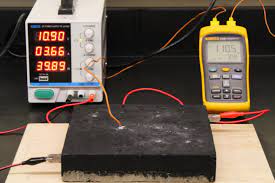
Breaking News
 Liminality: Truthstream Media's Lost History Film | Coming Fourth of July 2026
Liminality: Truthstream Media's Lost History Film | Coming Fourth of July 2026
 This Man Just Explained LA Riots PERFECTLY
This Man Just Explained LA Riots PERFECTLY
Top Tech News
 NVIDIA just announced the T5000 robot brain microprocessor that can power TERMINATORS
NVIDIA just announced the T5000 robot brain microprocessor that can power TERMINATORS
 Two-story family home was 3D-printed in just 18 hours
Two-story family home was 3D-printed in just 18 hours
 This Hypersonic Space Plane Will Fly From London to N.Y.C. in an Hour
This Hypersonic Space Plane Will Fly From London to N.Y.C. in an Hour
 Magnetic Fields Reshape the Movement of Sound Waves in a Stunning Discovery
Magnetic Fields Reshape the Movement of Sound Waves in a Stunning Discovery
 There are studies that have shown that there is a peptide that can completely regenerate nerves
There are studies that have shown that there is a peptide that can completely regenerate nerves
 Swedish startup unveils Starlink alternative - that Musk can't switch off
Swedish startup unveils Starlink alternative - that Musk can't switch off
 Video Games At 30,000 Feet? Starlink's Airline Rollout Is Making It Reality
Video Games At 30,000 Feet? Starlink's Airline Rollout Is Making It Reality
 Automating Pregnancy through Robot Surrogates
Automating Pregnancy through Robot Surrogates
 Grok 4 Vending Machine Win, Stealth Grok 4 coding Leading to Possible AGI with Grok 5
Grok 4 Vending Machine Win, Stealth Grok 4 coding Leading to Possible AGI with Grok 5
Dash of nanocarbon black makes conductive, heat-generating concrete

Normally, concrete is an insulator against electricity, but recent research has focused on making it conductive. Adding some form of carbon to the mix usually does the trick, with past versions being tested in airport runways that automatically melt snow.
For the new study, researchers at MIT's Concrete Sustainability Hub (CSHub) and the French National Center for Scientific Research (CNRS) added nanocarbon black, which is a cheap carbon material that boasts excellent conductivity, to concrete. At just a four-percent volume, the concrete was able to carry an electrical current – and as a result, it gave off heat too.
"Joule heating (or resistive heating) is caused by interactions between the moving electrons and atoms in the conductor," says Nicolas Chanut, co-author of the study. "The accelerated electrons in the electric field exchange kinetic energy each time they collide with an atom, inducing vibration of the atoms in the lattice, which manifests as heat and a rise of temperature in the material."

 Law n' Order
Law n' Order EMP and EMF-Free Vehicles
EMP and EMF-Free Vehicles HERE COMES THE MOTHERSHIP
HERE COMES THE MOTHERSHIP

